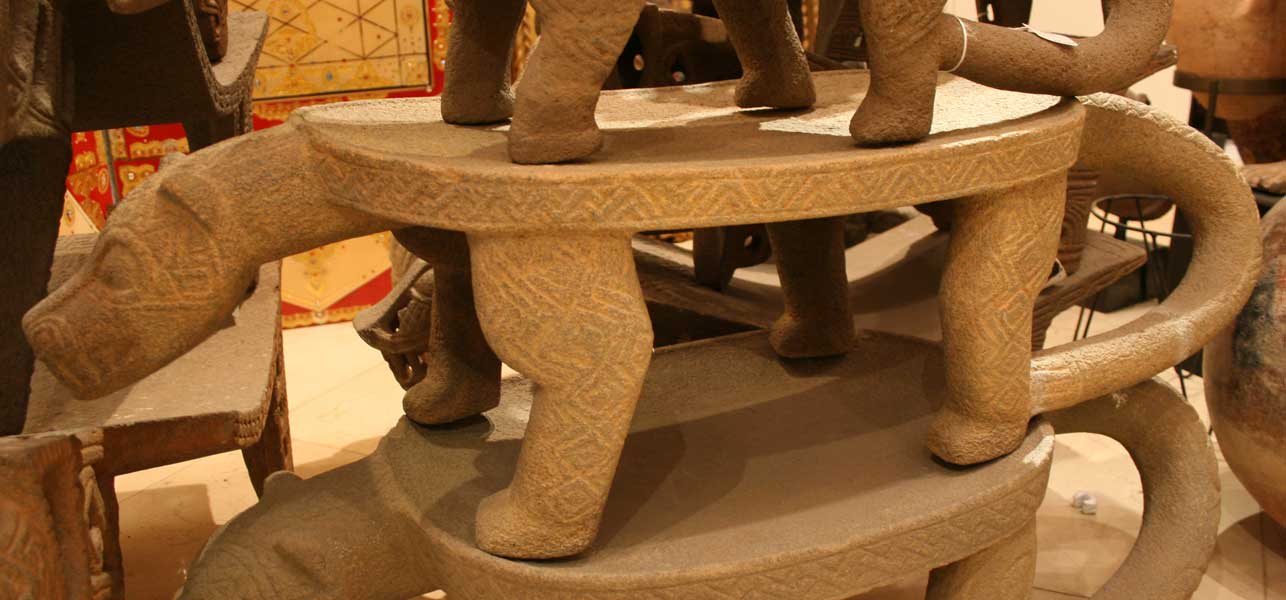Basalt Metate in the Form of a Jaguar, 500 CE - 1000 CE
Basalt
15 x 10.5 x 41
PF.4719
The production and distribution of ceremonial metates was in the hands of the ruling classes of Costa Rica. Their primary symbolic value was to present a visual proof of elite...
The production and distribution of ceremonial metates was in the hands of the ruling classes of Costa Rica. Their primary symbolic value was to present a visual proof of elite control of food control and processing. Metates were also essential household items used for grinding corn and earth pigments. The natural rough surface of the volcanic stone made it ideal for this purpose. This beautiful metate is in the jaguar motif so admired by the Costa Ricans, and so wonderfully created by its sculptors. The table is in an oval shape, its rim decorated in a triangular pattern. The tail, head and outside of the legs repeats this intricate design. The overall geometric structure is based on curves; most dramatic in the great twist of the tail, which stretches outwards then turns sharply to attach onto the left hind leg. Patterns on the jaguar's head, starting at the back of the neck and sweeping across the forehead and around the eyes, is reminiscent of the patterns on an actual jaguar. It is rare to find a utilitarian object that is also a work of art. Elegant and perfectly balanced, this metate is a symbol of authority, and a reminder of the beauty that can come from the hands of a talented sculptor.
